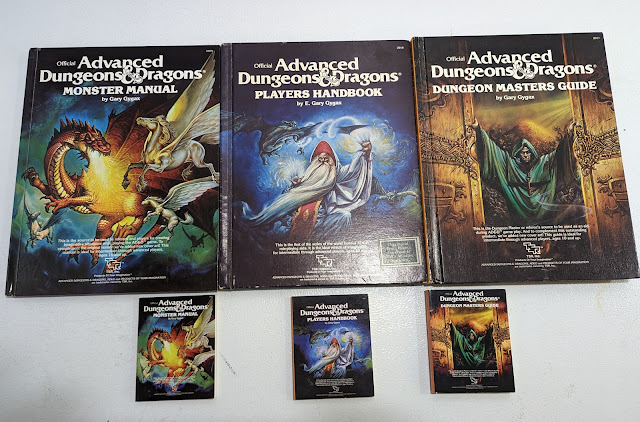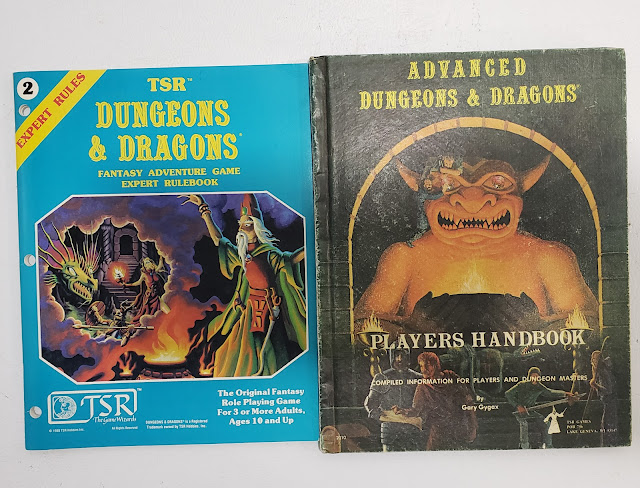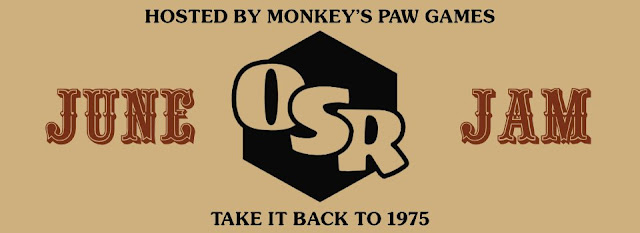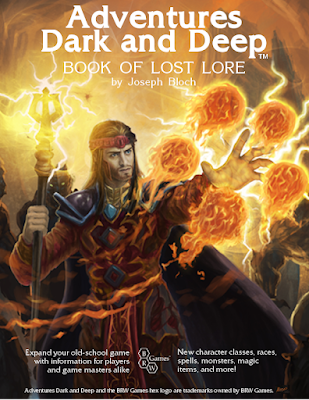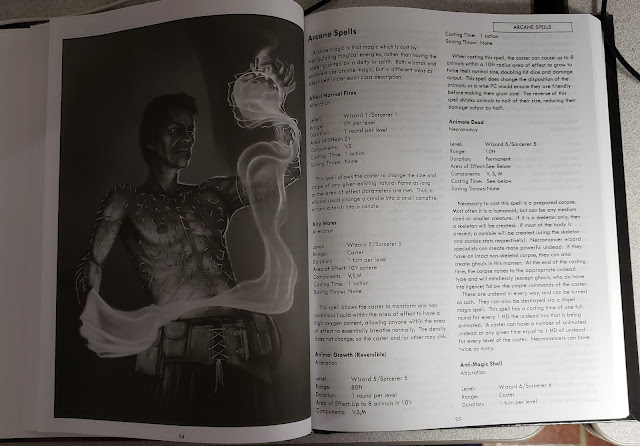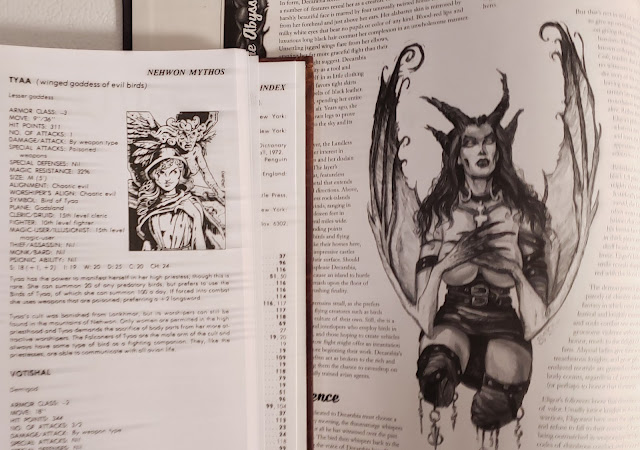We are now at the part of my hand-made maps of the world where I leave the dungeons (
Basic) and wildernesses (
Expert) that I knew so well. I am now in an area of half-rumored tales and speculations. Stories from other travelers, with tales that are both familiar and yet foreign to me.
Join me on my exploration of the new worlds of the D&D Companion Set. But a warning, here there be Dragons!
D&D Companion Set (1984)
I don't think it is too much to say that the Companion Set contains some of the most interesting changes and updates to the D&D than any other product TSR had published to date. I will talk more about these in the review, but first a look back.
I had eagerly awaited the Companion set for D&D ever since I got my Expert Set. That is, by B/X Moldvay/Cook Basic and Expert Set.
The Companion Set, as promised by the Expert Set rules, mentions that characters will now go to 36th level and there will be a way to cure undead level drain! Such promises. Such hope!
 |
| D&D Cook Expert Set, page X8 |
Though it was not to be and the B/X line stopped there, only to be "rebooted" in 1983 with the BECMI line, though we were not calling it that back then.
By the time the Companion did come out I had moved on to AD&D. I no longer had any interest in the Companion rules having discovered the world could also have Assassins, half-orcs, and 9 alignments.
I did manage to read it once. I was in college and it was at
Castle Perilous Games in Carbondale. Of course, at the time AD&D 2nd Ed was the new hotness and I had no desire to look
backward. What I saw though at the time did not impress me. I think the entire Mentzer set at the time (AT THE TIME mind you) made me think of it as D&D for little kids (now I see it differently).
Looking back now I see I made a BIG MISTAKE.
Well...maybe. I mean I would not have traded my AD&D time for anything, but I do wish I had given the BECMI rules more of a chance.
Now I can fix that.
Today I am going to cover the BECMI Companion Rules. I am going to cover both the
DriveThruRPG PDFs and
my recently acquired box set.
The Companion Set follows the rules as presented in the BECMI
Basic and
Expert books. But unlike those books, the Companion Rules sets off into uncharted directions and gives us some new material.
While the claim can be made that Frank Mentzer only edited and organized the Basic and Expert rules based on previous editions, the Companion set is all his. While there may be some influences from earlier editions such as Greyhawk (with it's 22nd level cap [wizards] and some monsters) and AD&D (some monsters and the multiverse) this really feels new.
Companion Player's Book 1
The player's book is 32 pages with color covers and black & white interiors. Art by Larry Elmore and Jeff Easley.
Opening this book we get a preface with a dedication to Brian Blume. A nice touch and yeah he is often forgotten in the tale of D&D's earliest years. The preface also firmly situates us in time. We 10 years out from when D&D was first published. The design goals of this book, and consequently this series, have never been more firmly stated. This is an introduction to the D&D game and designed to be fun, playable, and true to the spirit of D&D. It certainly feels like this is the successor to the Original D&D game; maybe more so than AD&D.
One page in and we are off to a great start.
The title and table of contents page tell us that this game is now "by" Frank Mentzer, based on D&D by Gygax and Arneson. As we move into the book proper we get a feel for the "changing game." Characters are more powerful and once difficult threats are no more than a nuisance or exercise. The characters are ready to take their place among the rulers of the world. This makes explicit something I always felt AD&D only played lip service to.
We get some new weapons that have different sorts of effects like knocking out an opponent or entangling them. We also get some unarmed combat rules. Now, these feel they really should have been added to the Basic or Expert rule sets. Maybe they were but were cut for space or time.
Up next is Stronghold management from the point of view of the player characters. Again here D&D continues its unwritten objective of being educational as well as fun. More on this in the DM's book.
Character Classes
Finally, about 11 pages in we get to the Character updates. Here all the human character classes get tables that go to level 25; again maybe a nod to Greyhawk's level 20-22 caps, and caps of 7th level spells (clerics) and 9th level spell (magic-users). Clerics get more spells and spell levels. The big upgrade comes in the form of their expanded undead turning table. Clerics up to 25th level and monsters up to Liches and Special. This mimics the AD&D Clerics table; I'd have to look at them side by side to see and differences. One difference that comes up right away is the increase in undead monsters. There are phantoms, haunts, spirits, and nightshades. Nightshades, Liches, and Special will be detailed in the Master Set.
Something that is big pops up in the cleric listing. A Neutral cleric of level 9 or higher may choose to become a Druid! Druids only resemble their AD&D counterparts in superficial ways. They have similar spells, but the BECMI Druid cannot change shape. It is an interesting implementation of the class and one I'll discuss more in a bit.
Arguably it is fighters that get the biggest boost in the Companion Set. They gain the ability to have multiple attacks per round now and other combat maneuvers such as smashing, pairing and disarming. This is a big deal since they got so little in the Expert set. Fighters can also "specialize" into three paths depending on alignment. There are Knights, Paladins, and Avengers. Each type gives the fighter something a little extra. Paladins are not very far off from their AD&D counterparts and Avengers are as close to an Anti-Paladin as D&D will get until we get to the Blackguards.
Conversely, Magic-users do not get as much save from greater spells. We do get the restriction that any spell maxes out 20dX damage.
Thieves can now become Guildmasters or Rogues. A name that will come up more and more with future editions of D&D.
BECMI "Prestige Classes?"
The Druid, Knight, Avenger, Paladin, and to a lesser degree the Magist and Rogues represent what could arguably be called the first Prestige Classes to D&D. Their inclusion predates the publication of the Thief-Acrobat in the AD&D Unearthed Arcana.
Prestige Classes are classes that one can take after meeting certain requirements in other "base" classes in D&D 3.x and Pathfinder. Often at 10th level, but can occur anytime the character meets the requirements. This concept is later carried on into D&D 4 with their "Paragon Paths" (chosen at 11th level) and even into D&D 5 with their subclasses (chosen at 2nd level).
The BECMI Avenger and Paladin are the best examples of these working just like the Prestige Classes will in 15 more years. This is interesting since it also means other classes can be added to the basic 4 core ones using the same system. An easy example is the Thief-Acrobat from UA or even the Ranger from AD&D. Though here the problem lies in the alignment system. Rangers are supposed to be "good" for example.
Demi-Humans
Demi-humans may not advance any more in level, but they are not idle. This is also the area of the Companion Set that I most often go wrong. Each demi-human race has a Clan Relic and some demi-humans could be in charge of these clan relics, making them very powerful. There are also clan rulers and they are also detailed. What does all that mean? It means there is a good
in-game reason why demi-humans do not advance in levels anymore. They are much more dedicated to their clans than humans. So after a time it is expected that they will return home to take up their responsibilities to the clan.
That is not to say that these characters do not advance anymore. Each demi-human race can still gain "Attack Ranks" as if they are still leveling up. They don't gain any more HP, but they can attack as if they are higher-level fighters. They also gain some of the fighter's combat options. Each class gets 11 such rank-levels. It seems to split some hairs on "no more levels" but whatever.
We end with a map of the expanding Known World. This is the continent of Brun of Mystara, but we don't know that yet. But I will discuss that later this week.
This book is a lot more than I expected it to be and that is a good thing.
Companion DM's Book 2
The DM's book is 64 pages with color covers and black & white interiors. Art by Larry Elmore and Jeff Easley.
There is a lot to this book. First, we get to some General Guidelines that cover the higher levels of play and planning adventures accordingly. There is sadly not a lot here.
We follow up with Part 2: The Fantasy World. This continues some of the discussion of stronghold management and dominion management as well. Now here is quite a bit of good information on what happens, or could happen, in a dominion.
This section also includes the hidden secret of the D&D BECMI series. The War Machine Mass Combat system.
War Machine
Around the same time TSR was also developing the BattleSystem Mass Combat system. The two are largely incompatible with each other. I always thought it was odd that two systems that do essentially the same things were created and incompatible with each other. Later I learned that D&D BECMI lived in what we like to call a "walled garden" in the business. It was out there doing it's own thing while the "real business" of AD&D was going on. The problem was that D&D Basic was outselling AD&D at this point. This was not the first time that TSR would woefully misunderstand their customers and
sadly not the last time either.
War Machine has an elegance about it when compared to BattleSystem. I am not saying it is simple, but the work involved is not difficult and I am happy to say it looks like it will work with any edition of D&D.
The Multiverse
A big part of any D&D experience is the Multiverse. This section allows the DMs and Players to dip their toes into the wider Multiverse which includes the Ethereal Plane and the Elemental Planes.
Space is also given to the discussion on aging, damage to magic items, demi-human crafts, poison, and more. We also get all of our character tables.
Monsters
About halfway through the book, we get to the section of monsters. A lot of familiar AD&D faces are now here, though a bit of digging will show that many of these are also from OD&D up to the Greyhawk supplement. Most notable are the beholder, larger dragons, druids (as a monster), and many elemental types. Monsters are split into Prime Plane and Other Planes.
Among the monsters featured are the aforementioned Beholder, larger Dragons, and bunches of new Undead like haunts, druj, ghosts and more. A few that caught my attention are the Gargantua (gigantic monsters) and Malfera. The Malfera REALLY caught my attention since they are from the "Dimension of Nightmares." More fodder for my Mystara-Ravenloft connection.
Monsters from the Other Planes focus on the Elemental planes.
Treasure
Lots of new treasure and magic items.
Adventures
There are three short adventure or adventure hooks for companion level characters.
All in all the Companion Set is full and had many things I did not think it had given my very casual relationship to it over the years. Reading it now and in-depth for the very first time I see there is a lot I could have used in my games back then.
Also reading this gives me a lot of ideas for more Basic/BECMI sorts of campaigns and plans for classes.





